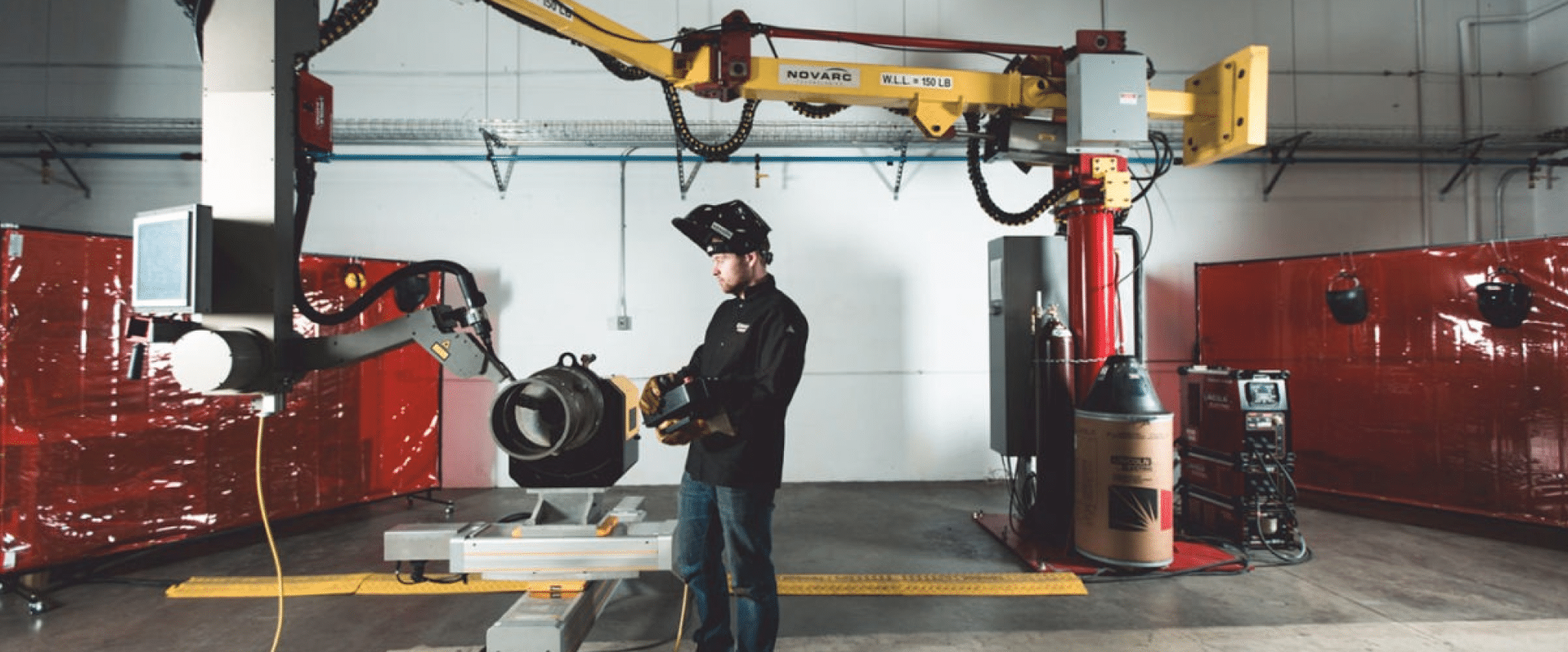
13 Feb 2020 How do we boost British Columbian Incomes? Focus on productivity and Tech
(image credit: 2019 TIA Winner Novarc Technologies’ collaborative Spool Welding Robot in action)
By: Jill Tipping
I recently read Jock Finlayson’s analysis of Canadian urban income growth (or lack thereof) and was struck by the difference in progress between us and our neighbours to the south:
CIBC Economics observed in a recent report that real disposable income per person rose by roughly $13,000 in Canada between 1980 and last year…over a span of almost 40 years, it represents a very modest advance, equating to an average annual growth rate of 1.3%…Stateside, real disposable income per person has climbed by US$25,000 since 1990, which is more than twice the gain that Canada managed to crank out measured in Canadian-dollar terms. The much faster productivity growth achieved in the U.S. compared to Canada likely explains most of the difference.
In another piece, Finlayson highlights the paucity of business investment in Canada over the last few decades, noting that our business investment per employee was just 57% of the US figure, and just 71% of the industrialized country average.
Why does this matter for Canadians working to get ahead? As he explains,
…companies and their employees become more productive by being able to work with more and better equipment, machinery, advanced technology products, factories and buildings, engineering infrastructure, and intellectual property.
Common to all of these improvements is better technology.
Economists have long observed that as worker productivity rises, so do wages. And though the correlation between these two has not been ironclad of late, in the current low-unemployment climate we have seen wages climb faster as workers are more in demand.
Economists have also long observed a “productivity gap” in Canada due to the smaller size of our businesses and their reluctance to invest in technology. As a country with abundant natural resources, it has been all too easy to coast on this. Outgoing BC Innovation Commissioner Alan Winter wrote as much in his October 2018 report to government, Observations on Innovation in BC.
In a time of record-low interest rates, and full employment, we owe it to our workers to invest in their productivity.
If not now, when? A future of global realignment around addressing the climate emergency and building economies that export ideas, services and inventions will not be kind to low-productivity, low-IP-generating economies. We either choose to proactively adapt, or we choose to have a lower relative standard of living.
The good news is that investments made now to improve our productivity will help boost workers’ incomes in urban and rural areas right across BC.
We know that demand for resources isn’t slowing; what will slow is the demand for inefficiently-gathered resources. Mining, timber, fisheries, and even fossil fuels will still be valuable in the future, as long as they’re sustainably managed and we realize more value per unit sold.
The BC Government recently stated its goal to drive “growth that generates steady increases in real wages, healthy increases in per capita real government revenue without raising tax rates, shares the benefits broadly across the province and across the population and cares for our natural environment.”
Improving productivity through investments in technology, especially from local companies, is one of the best ways to achieve these goals, while transforming our economy, and sustainably raising living standards for all British Columbians. It will continue our transformation from hewers of wood and drawers of water into exporters of knowledge.
Helpfully, the government’s report has flagged productivity growth as a target outcome. What is now needed is investment to ensure this outcome is a real priority. With the next budget just around the corner, workers in BC will soon have a chance to see how their paychecks may fare in the years ahead.

